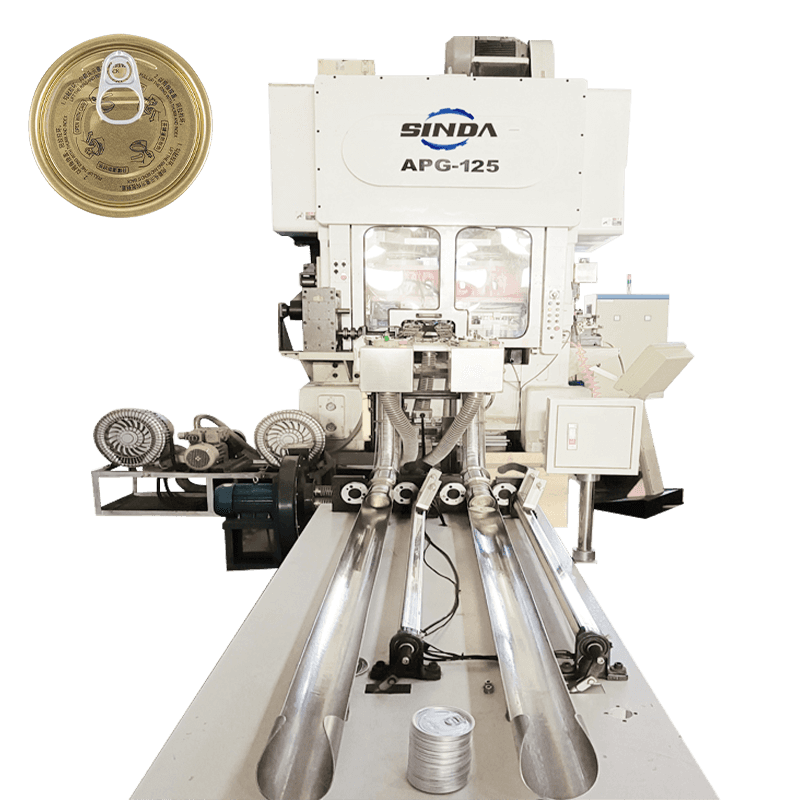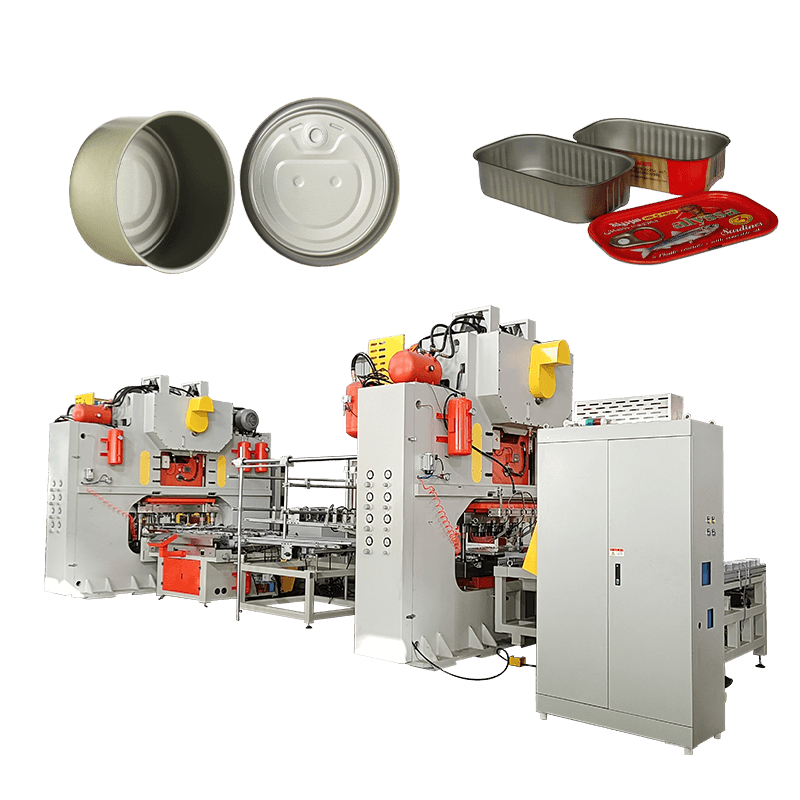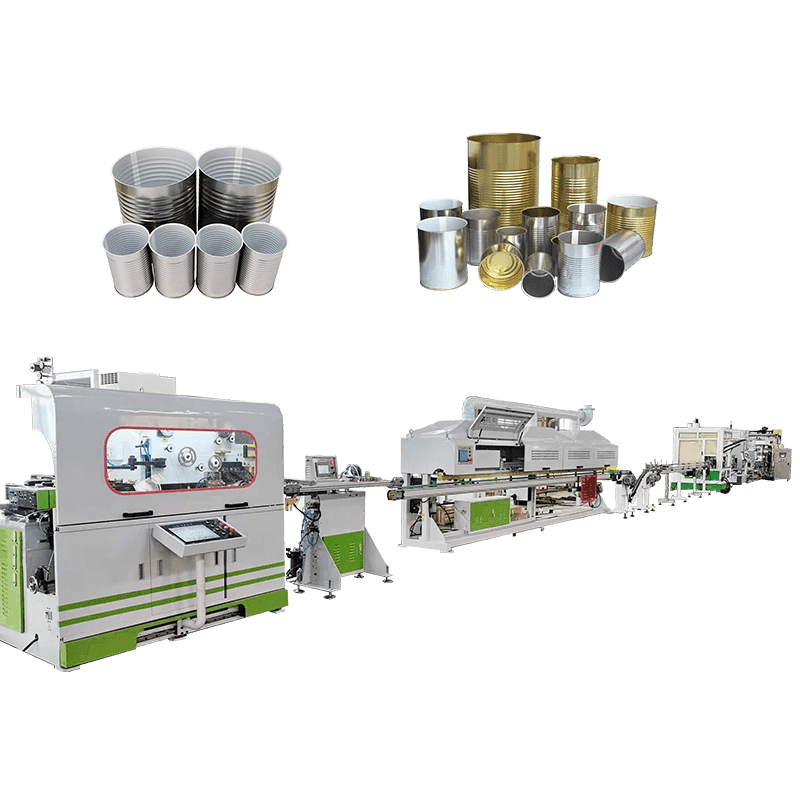Material cracking during stretching
In the production process of DRD cans, the stretching stage is one of the most critical processes. If there are tiny cracks in the material itself, uneven thickness, or unreasonable design of the stretching die, the can body may crack during the first or second stretching. This cracking usually occurs at the fillet of the can bottom or the transition part of the barrel wall. Improper setting of operating parameters (such as too fast stamping speed and insufficient lubrication) can also easily cause such failures. Material cracking will not only lead to an increase in scrap rate, but also damage the mold.
Mold centering deviation and uneven embossing
If the mold has position deviation during operation, it may cause the stretched can body to deform or have inconsistent height. This phenomenon is mostly caused by reasons such as loose mold installation, wear of guide pillars, and non-concentricity between the upper and lower molds. In some cases, the mold base may be deformed or the lubrication system may be blocked, resulting in uneven force distribution during mold embossing, resulting in uneven thickness of the can wall or wrinkles on one side, affecting subsequent trimming and sealing.
Trimming size deviation or burr problem
The trimming process is used to unify the can height and remove the burrs after stretching. However, in actual operation, if the trimming machine tool is worn or improperly adjusted, problems such as uneven cuts and large size errors often occur. The deviation of the blade gap may also produce obvious burrs, which not only affects the appearance of the can body, but also may cause scratches during transportation, filling or capping. In addition, too many burrs will block the conveyor chain and cause chain shutdowns.
Can jamming or positioning inaccuracy in the conveying system
Two-piece cans are transported between the various equipment on the production line through conveyor chains or tracks, and the running speed is relatively fast. Once the guide rails in the conveying system are worn, the positioning sensors fail, or the cylinders are not in place, the can body may jam, fall, or rotate in the wrong direction. Especially in the turning section and the equipment interface, if the alignment is not accurate, it is easy to cause the can body to pile up, fall, or even deform, and in severe cases, it will damage the mechanical parts.
Automatic detection misjudgment or missed detection
Production lines are often equipped with visual inspection systems to screen out defective can bodies, such as cracked cans, uneven can heights, and sunken can bottoms. During the operation of the detection system, aging of the light source, lens contamination, and improper setting of the image algorithm may increase the misjudgment rate, resulting in qualified products being mistakenly rejected or defective products being mixed into the qualified product flow. Equipment misjudgment is common in the case of water droplets, reflections or uneven colors on the can body, and the system needs to be calibrated and cleaned regularly.
Residual liquid or insufficient drying in the cleaning section
If the temperature of the cleaning line is unstable, the nozzle is blocked, the water pressure is insufficient, or the drying system is inefficient, there may be residual oil, water droplets or cleaning liquid on the surface of the can body. Such residues will affect subsequent coating, printing or sealing operations, and are also prone to corrosion or quality complaints. Common situations include poor drying air ducts, damaged heating pipes, and reduced fan power. It is usually necessary to regularly check the temperature control system and filter cleaning.
Inconsistent tank height
Inconsistent tank height will affect stacking stability and filling matching. This problem is mostly caused by unstable trimming, incorrect mold height setting, and asynchronous feeding system beats. If the specifications are not re-tested after the punch mold is adjusted, or the feeding length setting is biased, height deviations will accumulate in the later stage. Multiple tests and records should be conducted at the beginning of equipment operation or after mold replacement to ensure stable production.
Automatic stacking and packaging errors
When the finished cans arrive at the stacking area via the conveyor line, if the stacking mechanism sensor fails, the cylinder ages, the slide rail is stuck, etc., the cans may be skewed, not aligned into the frame, or collapsed. If the packaging system is operated by a robotic arm, it may also cause grabbing failure or repeated stacking due to incorrect coordinate setting. Such problems not only affect the packing efficiency, but also increase the risk of manual intervention and operation.
Uneven coating or spraying (such as configuring an internal coating system)
For food-grade DRD cans or products that require internal spraying, if the nozzle is blocked, the pressure is abnormal, or the position of the can is deviated, the inner coating will often be discontinuous, too thick, or missed. Such problems not only affect the appearance, but may also cause the product to react with the contents during storage, resulting in corrosion or leakage. The system should be equipped with pressure monitoring and spraying alarm functions, and daily maintenance and pipeline cleaning should be done at the same time.
PLC control system signal failure or communication interruption
The entire DRD production line is coordinated and controlled by the PLC system. Once the PLC module fails, the cable contact is poor or the communication is interrupted, the equipment often cannot be linked normally. For example, the conveyor is not running but the punch press is started, or the sensor signal is not uploaded, resulting in positioning errors. This type of failure usually occurs in humid environments, high control cabinet temperatures, aging cables, etc. It is recommended to perform program backup and hardware inspections regularly.

 English
English عربى
عربى русский
русский




